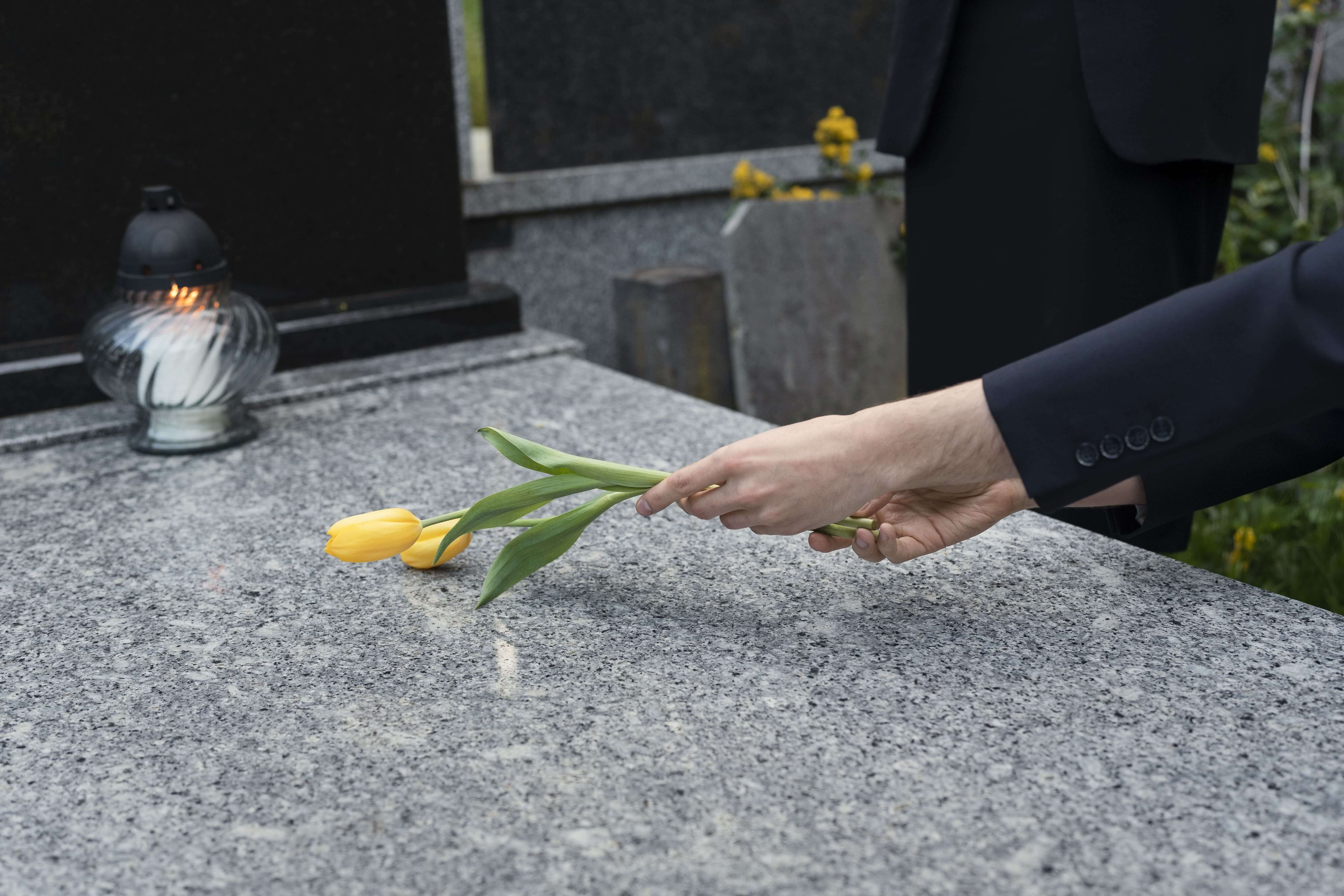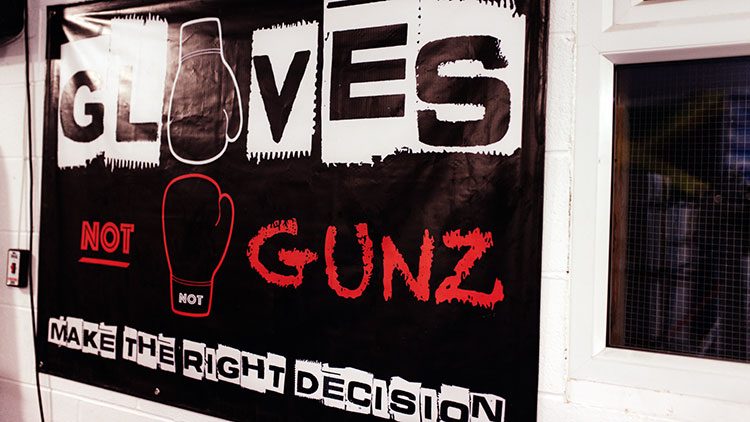
Yes, yes, I get it. Solving knife crime is complex. But I am so tired of reading about kids getting killed. One recent example of several was nine-year-old Lilia Valutyte in Boston. Lilia had her life cut short for no reason anyone could discover.
The father of a boy knifed to death days before his 13th birthday, sent a message of sympathy: “You will go through hell, be strong, take any help you get.” Then he adds: “What is wrong with this world?” Good question and hopefully later in this article we might find some explanations.
We have to find ways to stop kids being murdered in the most barbaric way – it is against the laws of nature that children should pass away before their parents. Despite many in the field working hard, knife crime shows no sign of dying out - only youngsters do.
How to reduce and even eradicate this brutal crime was the question I asked people who had experience of knife crime. Their answers included the ‘complex’ word and unsurprisingly, funding was mentioned, but it was not the only solution.
Though one of our contributors said he did not see much had changed, there had been some inroads though progress is slow.
Meanwhile the stabbings continue. Stats offer little comfort
The trend was broadly stable for two years, but fell slightly to 35% in year ending September 2020 due to the pandemic. In March to April 2020 there was a high custody rate (42%) which is likely to have increased due to the prioritisation of cases being heard at court, so that the most serious offences were dealt with first.
Disturbing stat: For 72% of offenders, this was their first knife or offensive weapon possession offence. Readers of this magazine know that London has the unenviable accolade of being the knife crime capital of the country – it’s killing explosion has fuelled the capital's highest murder rate in more than a decade with 149 people stabbed in the capital in 2019–2020. Crucially, 10 people on average are caught with blades EVERY DAY on the streets of London.
London Mayor Sadiq Khan says we must deal with the causes, not the consequences, and this gained some traction in the recent Panorama programme on BBC1 which produced a coruscating account of knife crime and its effects.
One of Panorama’s most startling statements is quoted here: “When we actively looked for anti-knife crime content, a 13-year-old's account was exposed to pro-knife groups, videos and pages on social media. No action was taken against a post showing off a knife on a 13-year-old's account on Instagram, Facebook, YouTube and Snapchat. Tik Tok, however, did remove the content for violating its guidelines on dangerous acts, and was warned the account was close to being suspended.”
The police also found videos of knives being flicked and shown off, and of boys linked to a recent murder attacking one another, which DCI Andy Howard told Panorama he believed were being shared "openly and very regularly" on Instagram and Snapchat: "There is certainly a very unhealthy attraction to filming, recording, acts of really quite serious violence."
The Panorama reporter showed several screen grabs from social media accounts to a group of children, but they weren't shocked by the results at all - and admitted they all see knives and violence regularly on their social media feeds.
"I've seen bigger knives to be honest," Jacob says of his own social media accounts.
"We get exposed more to people kind of showing them off," Poppy explains, talking about the image people her age try to portray mainly on Instagram, as well as Snapchat. One saw Rambo knives, and Izzy butterfly blades, which people share because they are colourful and more appealing.
The Online Safety Bill passing through Parliament with the Secretary of State at the time having high hopes: "This Bill is about keeping children and young people safe. These platforms know that knife content is being sent to young people's social media feeds. The companies can actually put what is wrong, right now."
Many fear those hopes will not be realised. In its current form, they think the Bill will not save lives because more needs to be done to verify the age of young users and to limit their exposure to harmful violent posts - even if the content might be legal. So what can be done – to stop the surge of knife crime?
People who help with the problem have their say

Exploitation, county lines, organised crime and the vulnerability of the child all make fighting knife crime a complex issue. Children with whom we work, often say the main reason they have carried knives in the past is out of fear or coercive control.
We need to recognise that law enforcement alone will not make our communities safer and offer these children a healthy, happy, safe childhood from which to prosper. The wrapround care and multi-agency involvement these children need is crucial. Prevention and diversion options for children on the cusp of the system should be prioritised and these options must support children to address the underlying cause of their offending behaviour – whether that’s past trauma, coercive control or other factors.
Gangs and Violence Reduction Services, Catch-22 justice. Catch-22 are the principal partners of Fighting Knife Crime London
In the year ending March 2021 as published by the ONS there were around 41,000 incidents involving a knife or sharp instrument in England and Wales (excluding Greater Manchester Police Force). This was 15% lower than in 2019/20 and 27% higher than in 2010/11. Although there has been improvement in recording practices since 2018/19 (www. ons.gov.uk, 2021) there has still been a steady rise with increased media attention and £130.5 million pound package of support to tackle serious violence, murder and knife crime was announced in March 2021 which highlights the continued concern of knife crime and how this can destroy lives, families, and communities.
• Firstly, it is important to note that knife crime is not a singular issue and support, prevention and rehabilitation services will need to have a localised response to knife crime, considering a range of different risk factors. Although you could have an overarching model to help reduce knife crime, such as a 1-2-1 mentoring service, it is important for the staff team to be relatable and know the area and community of those they are working with. For example, there are distinct difference between London, the West Midlands and Manchester so it couldn’t be a uniformed approach.
• Understanding the environment: contextual safeguarding, as developed by Dr Carlene Firmin, is an approach to understanding and responding to significant harm experienced by young people, beyond their families. One key aspect of this is partnerships with the community, for example shop keepers, bus drivers, teachers, and retail workers, and the importance of a community response to help safeguard young people. These partnerships help address the underlying causes and not just the effects of safeguarding issues, i.e. these partners can use their influence to ensure harmful situations are reduced. An example of contextual safeguarding provision in practice could look like this: ‘a taxi driver has noticed that a particular alleyway outside a popular park young where people congregate is dimly lit and not easily visible from the road, the taxi driver reports this to the council, and they add some lighting’. As the taxi driver regularly drives that route, they have noticed a potential risk which might have been missed by other people.
• Finally, diversionary activities for young people and young adults are another important factor in the reduction of knife crime as this can create a sense of belonging, help individuals learn a new skill, and develop social skills. In turn, this can help support an exit plan for young people moving away from gang affiliation and associated violence. It can provide positive trusted role models for young people, to promote safe disclosures and information sharing, if they are concerned about something going on in their local area.
This could be grooming, an emergence of gang associated activities, or thinking about carrying a knife for protection or alternatively, knowing someone who has already started to carry a knife. It is important to note here, that these diversionary activities should be accessible to young people, taking into account cost, location and timing. These opportunities and interventions need to be created with the voice of the community to ensure that they are localised and meet the target audience. The points mentioned above are not an exhaustive list, these are just some areas of focus that can help with the reduction of knife crime and associated violence. However, the most important point to reiterate is that all interventions need to be localised, person centred and involve the voice of the community to make sure they are holistic and dynamic, considering the continual changes in risk factors.
Children are not the problem. They are part of the solution.

As someone who carried knives, and survived over 12 years in prison, there is not much creativity and recognition of collaborative working to tackle knife crime, and tackle young people's inequalities, mental health, and opportunities for those young people involved with the Youth Justice System.
In February 2022, The London Assembly recognised that knife crime is a long-term issue nationally and that all agencies need to work together to tackle it. Contributing factors behind young people becoming involved in or a victim of violence are lack of opportunity, deprivation, and inequality. During lockdown, knife crime dropped considerably, but these figures have now begun to increase with restrictions easing. The government's answer is to tackle the issue by granting police more extraordinary powers to closely monitor stop and search, and punish "suspicious" young people.

I do not see much has moved forward.
Talking to young people involved with the Youth Justice System, they explained how they just want to complete what's required of them – ‘wanna get through it’. Many felt decisions about their rehabilitation were largely outside their control.
Knife crime and crime is a social problem – its causes, not its symptoms, must be treated. We need to refill local communities with positive returning citizens, and be creative in the solutions we seek. We need to work together collaboratively with young people, ensuring they are part of the solution to knife crime, not part of the problem.
Young people need access to services, guidance, and opportunities to build their strengths, capacities, and aspirations and develop their pro-social relationships with adults. Our consultations with young people indicate that this approach increases young people's success and achievements while decreasing negative behaviours and outcomes.
Young people must be diverted away from the youth justice system into positive, nurturing relationships. These environments should provide aspirations, and appropriate learning environments to improve young peoples’ lives and life chances by building relationships and playing an active role in the community while reducing criminal and antisocial outcomes.
Responses to youth crime and knife crime must be a child-first approach. Relationships must involve collaborative solutions for engaging with young people which are sustainable and productive. Imposing interventions on young people is a short-term solution. It is essential to recognise that many young people do not choose to offend and often find they are trying to resist and confront those who carry knives.

Carrying a knife is a cultural rite of passage like getting a tattoo. I believe in 200 years, people will say: 'Would you believe they didn’t invest in young people as we do? No wonder they had such a high rate of knife crime.'
When I was young, we had youth clubs, adventure playgrounds, even a church social club where, after listening to a 15 minute sermon, you could have two hours using their facilities. There were also after- school clubs where you stayed until 5 pm so there wasn't much time to wait for parents returning from work.
Now you have kids released from school at 3pm with nothing to do until their parent/s get back from work. Where are these amenities today? Knife crime will be an insoluble problem unless, and until, money is spent on giving young people somewhere to go instead of hanging around McDonalds or street corners.
%20(1).jpg)
BBC London TV News highlighted the tragic death of London's recent knife crime victim, 16 year old Teon Campbell-Pitter, and then showed how our charity is trying to reduce knife crime with the vital work we are doing with its new White City Estate programme in West London.
With knife crime rising, and communities feeling increasingly unsafe, we have embarked on a new place-based approach to tackling the problem and creating safety, starting with this first pilot programme which aims to bring opportunity and hope back into the community.
We also ran a three-day holiday programme with 25 children attending, which included workshops, boxing, music workshops, football with QPR FC, rowing with Fulham Reach Boat Club, and the Key4life horses. This is only a start, but we aim to make permanent inroads into reducing the numbers.

Knife crime is a complex issue that requires a range of interventions to help prevent and reduce young people from using weapons.
There needs to be a combination of education, therapeutic intervention, diversionary activities and community work to make an impact on breaking the cycle of knife crime. Our experience at Gloves Not Gunz of supporting young people with these issues has shown common themes in why young people are carrying and using weapons on the streets. These tend to be young people not in education or employment, adverse childhood experiences, lack of support and activities, and negative peer relationships.
Our work aims to tackle these issues through mentoring, education and employment pathways, therapy and offering positive activities during key times in which young people could be vulnerable (evenings and weekends).

Our team are all using 'trauma informed' approaches to support young people and families, and our work is underpinned by the Anna Freud AMBIT model. This Adaptive Mentalisation Based Integrative Treatment is an approach to helping people who have multiple needs and was developed at the Anna Freud National Centre for Children and Families. The AMBIT programme provides consultation, training and supervision to teams or ‘whole-systems working’ with a range of age groups in a range of settings: health, social care, youth provision, education and justice.
There are many other more political issues that have caused serious youth violence to escalate in the past 10 years. However, we focus on solutions and making sure we're getting the best possible outcomes for young people and families.
I first got introduced to Youth Ink in 2021 while on a 6-month referral order at the Youth Offending Service (YOS).
This was not my first referral order. I came to YOS as I started associating with the wrong company and was eager to make money in any way I saw fit, regardless of whether it was against the law. And this led to me repeatedly returning to the YOS on Court Referral Orders. I had no intention of changing my ways, and instead, focused on finishing my order and continuing on my previous path.
At the start of my second order, I was introduced to the founder of Youth Ink, Mifta Choudhury who described the work the charity did to support and help young people in the youth justice system by using the lived experiences of the workers.

Not long after meeting him, I began to attend regular sessions with members of the charity, the Peer-led Conversation Hub, held on Tuesdays at the YOS. With the help of Youth Ink, I realised that I didn't need to revert to doing what I was doing, and the charity helped me think about the consequences my behaviour would have on my family and friends if I continued. This has led me to change the path that I was headed on by becoming a volunteer, and securing a session role with the charity working at Southwark YOS, supporting other young people like me.
Through the charity, I had the opportunity to visit the Ministry of Justice to participate in workshops with other young people involved with the Youth Justice Board (YJB). There I met Nicola Kefford, the YJB stakeholder manager who led the workshop. We all had to think of ways in which we could help MPs to devise policies aimed at protecting and supporting young people in the criminal justice system instead of instantly punishing them.
We spoke about education, young people's mental health, household financial stability schemes and more where everyone could speak out on topics in a very open-minded environment. I found the workshop valuable and I am looking forward to working with the YJB as a YJB ambassador. I am also a sessional worked for Youth Ink and will never return to my previous life.
James lived with mum and her partner when his mum and dad were going through a separation period. He had a poor relationship with his mum’s partner, witnessing domestic abuse in the household. On one occasion, James held a knife to his mum’s partner to stop the abuse. This resulted in a strained relationship between James and his mum. James started attending Southwark Youth Offending Service for his 12-month Referral Order for possession of a knife. He was referred to the Peer Navigator Network to meet with other young people who had shared similar experiences, who support him to develop, and manage his emotions.
Liam came to the Youth Offending Service for his 6-month Referral Order for possession of a knife. His brother’s involvement in violent crime and fear of his attacks were negatively impacting Liam’s wellbeing, having experienced some upheaval and trauma in his childhood and living with his single-parent mum. She also has had traumatic experiences, and was struggling with his elder brother’s offending, and gang involvement. Liam was at high risk of entering into criminal behaviour himself and following his brother’s path.
Liam attended Southwark Youth Offending Service summer residential, a program led by Youth Ink staff. Despite it being his first time away from his home and family, he fully immersed himself in the experience, taking responsibility as a volunteer to support the residential staff. Liam later described this as one of the best experiences he’s ever had; it made him feel good about himself and left him more determined to make positive changes and decisions in life.
When Liam started at the YOS, he was quiet and shy, especially in groups. As he progressed through the court order, he opened up in discussions, particularly around Pathways and Choices looking at the potential and realistic consequences of carrying a weapon and dealing drugs. Liam now says he’s a lot better at dealing with problems when they arise, including his emotional issues. He hasn’t re-offended since participating in Youth Ink’s Programmes.
Melchi was at risk of using offending to manage his negative emotions and experiences. He was referred to the Peer Navigator Network to meet with other young people who had shared similar experiences. The objective of Melchi’s participation was to understand his trauma better, to reflect on his life experiences and in turn, develop a more positive self-image.
When Melchi first started coming to the Youth Offending Service, it negatively impacted his self-confidence. His school peers knew he was involved in the criminal justice system, making him feel stigmatized by both classmates and staff.
As his court order progressed, Melchi became more vocal within the Peer-Led Conversation Hub discussing his trauma and journey with other young people. His new-found confidence led him to lead on a JAC centre project, sharing his personal experience and acting as a positive role model for similar backgrounds. Melchi had the rest of his court order revoked 6months early due to the progress he made through Youth Ink. He has not committed any further offences since and now works a Peer Support Navigator (PSN) in a paid sessional role. As a PSN, he supports other people like himself to access services and break down stigmas around emotional wellbeing and mental health. “Working at Youth Ink has changed my life.”
The family of “John”:
We feel imprisoned by our grief and trauma. We cannot see a way of recovering from this. John had his whole life ahead of him. Those who attacked our son get to see their families and have a future, John does not.
… it also affects police officers called to the scene:
A Detective Chief Inspector:
"Look at the pain these incidents cause - not only could you take away someone else's future and destroy the lives of their loved ones, but also your own and those of your family and friends. Dozens of lives are destroyed by the devastating consequences of carrying these weapons."
The key word for me is what my Network practices: collaboration. Instead of working in their own ponds, may I suggest that organisations evolve into an influential, crusading group, promoting cohesive solutions to the Secretary of State for Justice. Finally, I reference Bruce Houlder, Founder of Fighting Knife Crime London: “We really do need to fire up the National debate for what I think is a forgotten generation”.
Their online magazine should be required reading for all those involved in the area of knife crime. It has a wide readership. As well as approximately 650 directory member organisations, it has a up-to-date library of reports, research and statistical information, a video and news area, and a social media presence as well.
You can subscribe here: www.fightingknifecrime.london/subscription
Lady Val Corbett, Founder, The Corbett Network for Prisoner Reintegration

